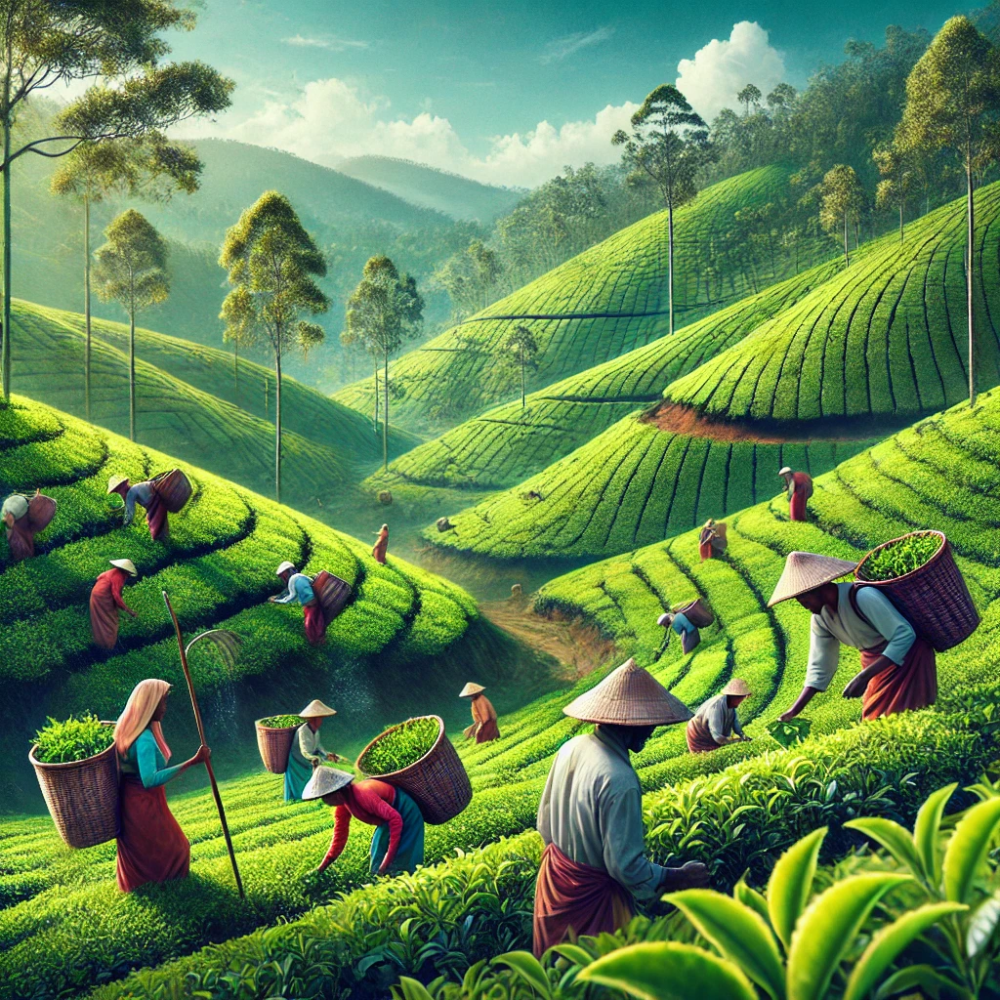Ceylon Tea: Excellence in Quality and Original Flavor
Ceylon tea was named after the island of "Ceylon," which is the old name of Sri Lanka. Sri Lanka is one of the largest tea-producing countries in the world and has been known for producing high-quality tea since the 19th century. The British named the tea grown on this island "Ceylon Tea," which later became a distinctive mark of quality associated with a specific type and flavor of tea.
The Difference Between Ceylon Tea and Regular Tea
Climate Region:
Ceylon tea is grown in Sri Lanka, where the fertile soil and tropical climate provide ideal growth for the tea plant, giving it a unique flavor.
Regular tea (such as black or green tea common worldwide) can be grown in different regions like China, India, Kenya, and others. Each region gives the tea different characteristics.
Flavor:
Ceylon tea is known for its unique and rich flavor, usually a mix of strong taste and refreshing notes. Some types come with floral or lemon flavors, which make it different from other teas.
Regular tea can vary greatly depending on the country it’s grown in and the type of processing it undergoes. It might be lighter, more bitter, or have smoky flavors.
Quality:
Ceylon tea is known for its high quality and purity in its ingredients. It’s often considered a luxury tea due to the growing conditions and special care during production.
Regular tea can come in various quality levels, including high-quality types like Japanese green tea or Chinese white tea, along with lower-quality commercial types.
Processing:
Ceylon tea is usually black tea, but there is also green and white Ceylon tea. The leaves are processed in ways that preserve their flavor and aroma.
Regular tea includes multiple types (black, green, white, oolong), and each type is processed differently depending on the local traditions of the region where it's grown.
Labeling and Classification:
Ceylon tea is classified based on the elevation it’s grown at—for example, there is Ceylon tea grown in high regions (High Grown) and others in low regions (Low Grown), each having different flavor characteristics.
Regular tea is not necessarily classified by elevation, but might be classified by type and processing method (like green or black tea).
In general, the key difference between Ceylon tea and regular tea lies in the region it’s grown in, the unique flavor, and the high quality, which gives Ceylon tea a special identity that makes it desirable for many tea lovers around the world.
Dilmah and Distinctive Ceylon Tea
Dilmah is one of the most prominent producers of high-quality Ceylon tea and is considered a global leader in this field. Dilmah was founded by Merrill J. Fernando, who had a vision to offer pure and unique Ceylon tea to tea lovers around the world, which led the brand to adopt the principle of "from the plantation to the cup." Dilmah is known for offering natural tea without unnecessary additives or blends. The tea leaves are grown, picked carefully, and processed to preserve the flavor quality and authenticity.
What makes Dilmah stand out from its competitors is its commitment to delivering Ceylon tea with the highest quality, ensuring that the tea reaching the consumer is fresh and natural. This makes the flavor richer and more distinctive compared to other types available on the market. Dilmah focuses on production transparency, caring for farmers, and attention to small details to offer an unforgettable tea experience, while many competitors use blends from different regions, which sometimes causes the loss of the unique identity of pure Ceylon tea flavor.
Let me know if you want this shortened or styled differently.

